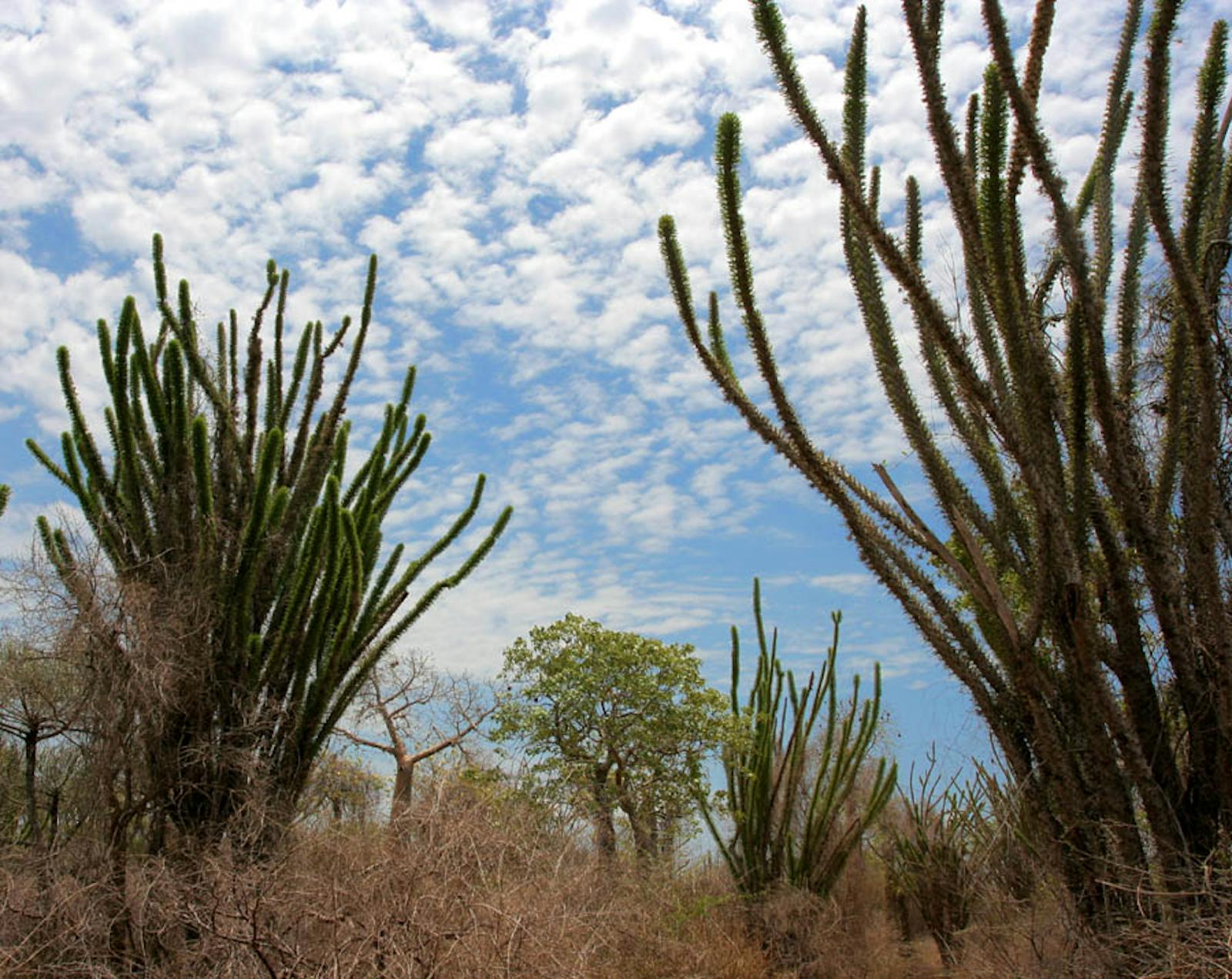Madagascar Spiny Thickets
The ecoregion’s land area is provided in units of 1,000 hectares. The protection goal is the Global Safety Net (GSN1) area for the given ecoregion. The protection level indicates the percentage of the GSN goal that is currently protected on a scale of 0-10. N/A means data is not available at this time.
Bioregion: Madagascar Island (AT6)
Realm: Afrotropics
Ecoregion Size (1000 ha):
4,349
Ecoregion ID:
99
Protection Goal:
25%
Protection Level:
3
States: Madagascar
In the Madagascar Spiny Thickets ecoregion, rainfall is erratic from year to year; prolonged periods of drought, lasting up to several years, occur regularly. Many of the spiny bush plants possess extreme adaptations to this aridity, such as extended root systems with massive tubers, enlarged, succulent trunks and branches, succulent and reduced leaves, thorns, and waxy and hairy coatings.
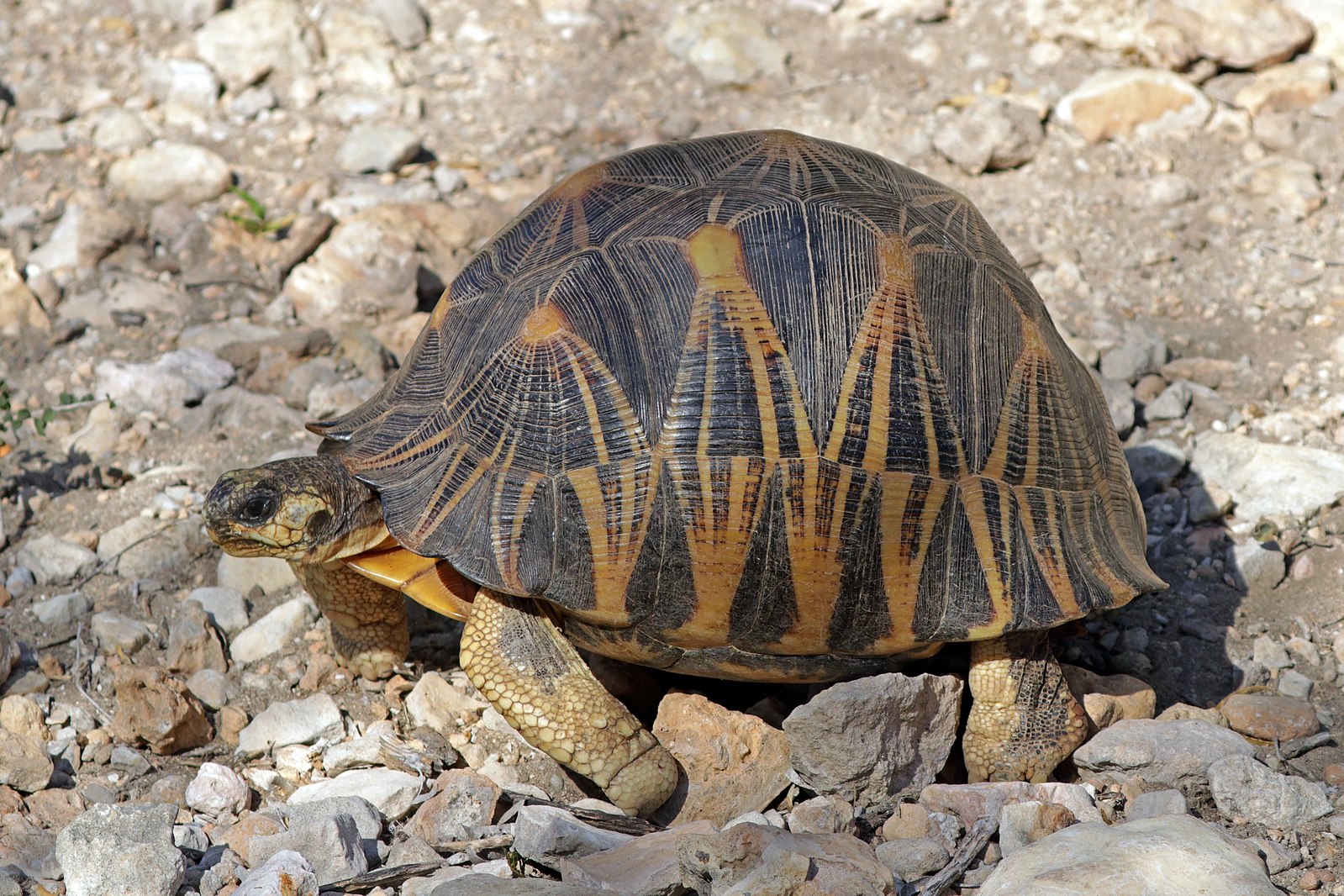
The flagship species of the Madagascar Spiny Thickets ecoregion is the radiated tortoise. Image credit: Charles J Sharp, Creative Commons
The ecoregion extends across southern and southwestern Madagascar from the Mangoky River on the west coast to the western slopes of the Anosyennes Mountain chain in the southeast. There are two major rock types in the ecoregion: the Tertiary limestone of the Mahafaly Plateau and the unconsolidated red sands of the central south and southeast.
This geology corresponds to a major division in the habitat. The taller, dense, dry forest on the sandy soils is dominated by the octopus tree (Didierea madagascariensis) and the more xeric adapted vegetation the calcareous plateau around Lake Tsimanampetsotsa is characterized by dwarf species.
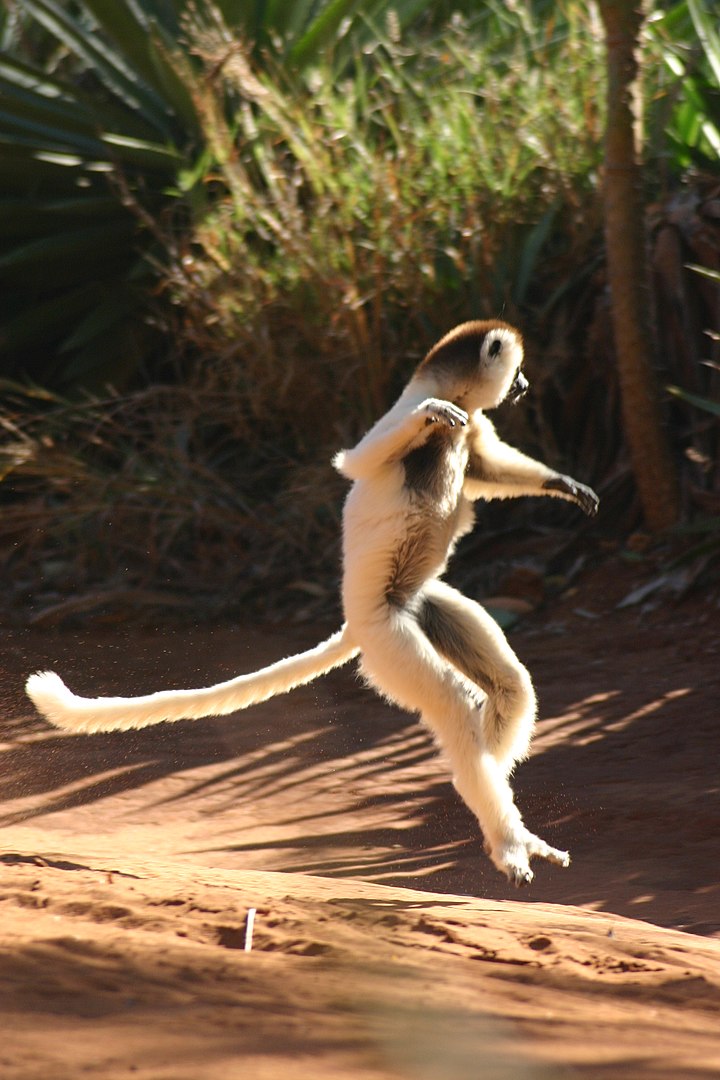
Verreaux's sifaka, a lemur species occurring, in part, in the spiny forests. Image credit: Courtesy of Neil Strickland, Flickr
This ecoregion falls in the extreme rain shadow of Madagascar behind the eastern chain of mountains and far from the prevailing northeastern rains. Consequently, the average annual rainfall is 500 mm or less per year. The driest areas are in the southwestern coastal region where the annual rainfall may be less than 350 mm per year, and the dry season may last 9 to 11 months. Average annual temperatures range between maximums of 30° to 33°C and minimums of 15° to 21°C.
This globally important ecoregion has the highest percentage of plant endemism in Madagascar. Some of the dominant forest species belong to the endemic family Didiereaceae. Some of the endemic plants are extremely rare and have highly restricted ranges, such as Aloe suzannae and the palm, Dypsis decaryi, as well as tiny Euphorbia herbs, Pachypodium spp., and Hibiscus shrubs.
The fauna of the ecoregion is also distinctive and includes three strictly endemic mammals, the white-footed sportive lemur, Grandidier’s mongoose, and grey mouse lemur. Grandidier’s mongoose was described as new to science in 1986 and has a restricted range around Lake Tsimanampetsotsa. Eight bird species are endemic to the ecoregion, including Verreaux's coua, running coua, Lafresnaye’s vanga, red-shouldered vanga, and Archbold’s newtonia.
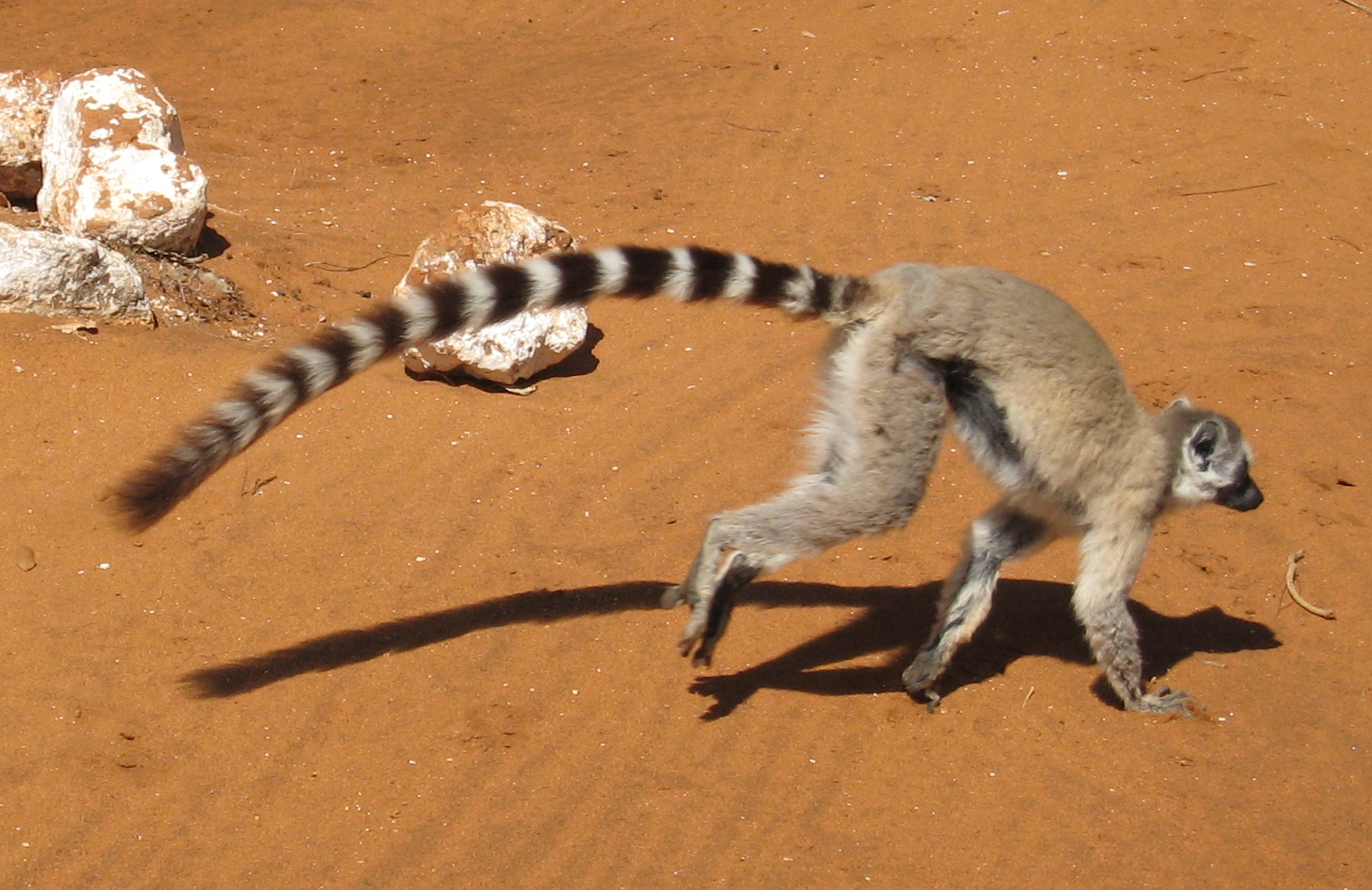
A ring-tailed lemur in Berenty Reserve, set in the spiny forests ecoregion. Image credit: Alex Dunkel, Creative Commons
Two endemic species have very restricted ranges. The subdesert mesite and long-tailed ground-roller are known only from a narrow coastal strip on the northwest edge of the ecoregion. Each of these species belong to monospecific genera and are representatives of two of the five families endemic to Madagascar. Species of reptiles strictly endemic to the ecoregion include the Belalanda chameleon and Animena chameleon, as well as the radiated tortoise.
Blocks of relatively intact forest remain in the northwestern portion of the ecoregion and the extreme southeast. Much of the inland area has been replaced by secondary grassland and wooded grassland. The rate of habitat loss and degradation is lower relative to other habitats around Madagascar, in part because of the low human population density. Several relatively small reserves occur, including Tsimanampetsotsa National Park and Ramsar site, and Cap Sainte Marie Special Reserve as well as proposed protected areas including Macrobasia, Ranobe PK 32, South-West Ifotaky, Ekintso, Behara-Tranomaro, Ambia, Beteny, and Angavo.
The principal threats are exploitation for firewood and charcoal production. Only hardwood trees are logged, causing forest degradation. Selective logging of forests for construction wood is also a significant threat, particularly as the spiny thicket forest type has a naturally slow rate of growth and regeneration. Between 1990 and 2010, the ecoregion experienced the fastest rates of deforestation of all regions in the country.
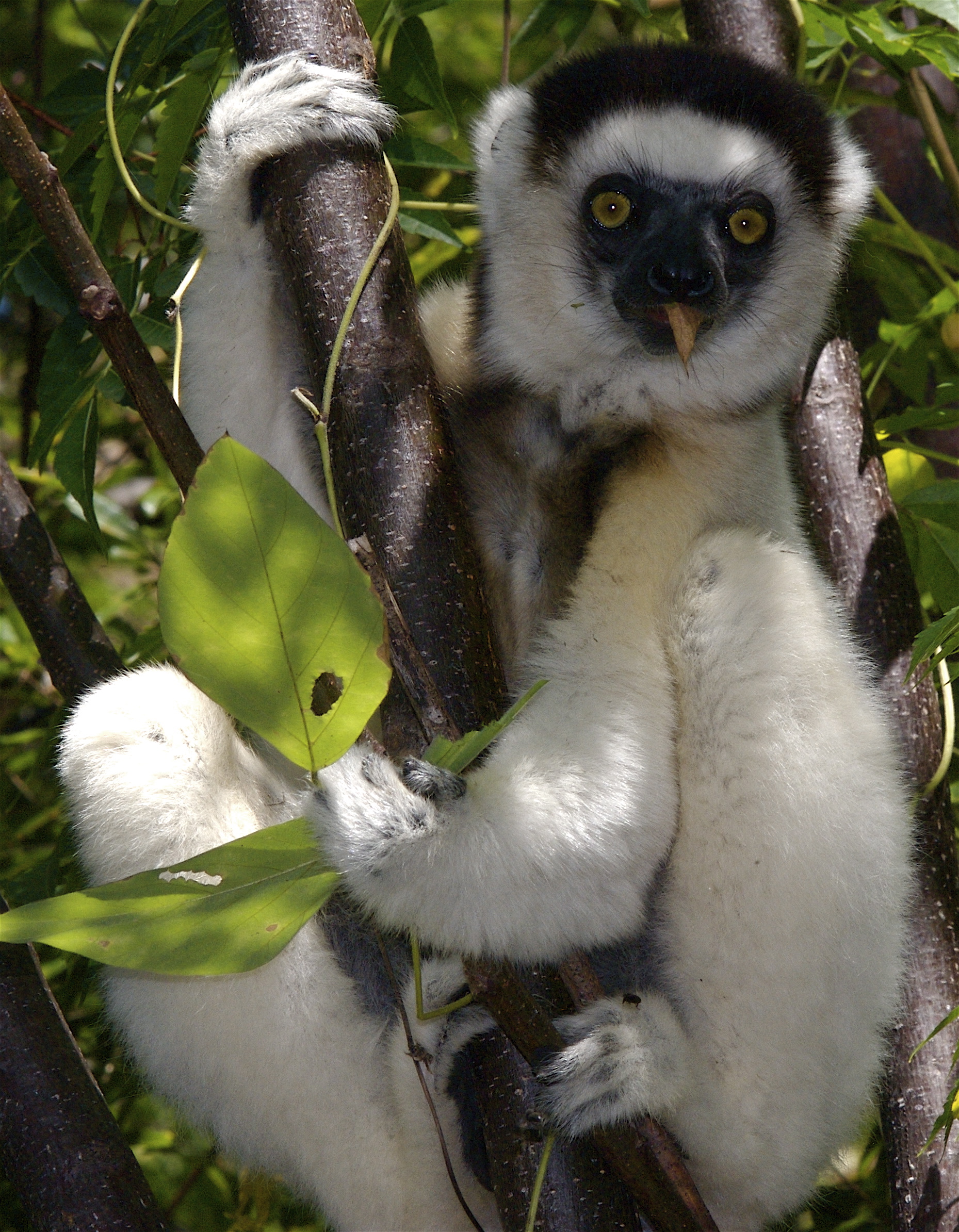
Verreaux's sifaka. Image credit: Jeff Gibbs, Creative Commons
The cultivation of maize and grazing of domestic livestock (primarily cattle and goats) are also expanding in the ecoregion and poses a serious threat where it occurs. Invasive plant species, such as prickly pear, rubber vine, and Sisal have increased the degradation of the habitats, especially in disturbed forest areas. As in other regions of Madagascar, the collection of endemic species of plants and animals for international trade poses a threat to the integrity of the habitats, for example, the radiated tortoise.
The priority conservation actions for the next decade will be to: 1) prevent deforestation by encouraging alternative sustainable livelihoods; 2) implement alternative fuels to prevent charcoal production and firewood collection; and 3) establish stricter protected areas where much of the high value biodiversity sensitive to habitat disturbance occurs rather than multi-use communally managed reserves.
Citations
1. Burgess, N., Hales, J.A., Underwood, E., Dinerstein, E., Olson, D., Itoua, I., Schipper, J., Ricketts, T. and Newman, K. 2004. Terrestrial ecoregions of Africa and Madagascar: a conservation assessment. Island Press.
2. CEPF. 2014. Ecosystem Profile: Madagascar and Indian Ocean Islands. [Online]. [Accessed 25 April 2018]. Available from: https://www.cepf.net/sites/default/files/ecosystemprofile_madagascar_en.pdf
3. Nopper, J., Ranaivojaona, A., Riemann, J.C., Rödel, M.O. and Ganzhorn, J.U. 2017. One forest is not like another: The contribution of community-based natural resource management to reptile conservation in Madagascar. Tropical Conservation Science. 10, pp. 1-10.
4. Gardner, C.J., Jasper, L.D., Eonintsoa, C., Duchene, J.J. and Davies, Z.G. 2016. The impact of natural resource use on bird and reptile communities within multiple-use protected areas: evidence from sub-arid Southern Madagascar. Biodiversity and conservation. 25(9), pp.1773-1793.

